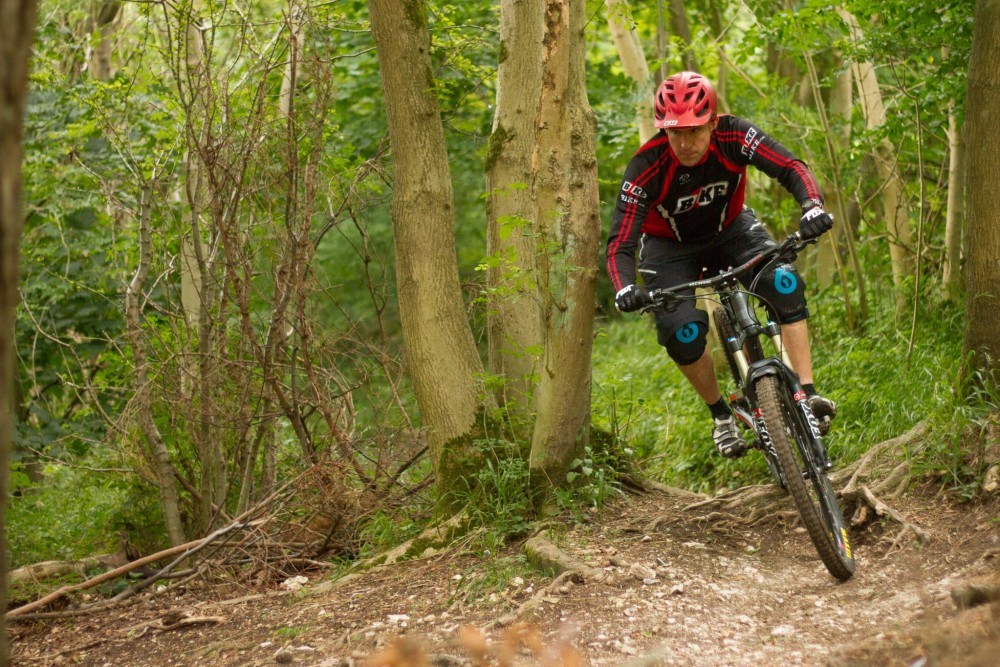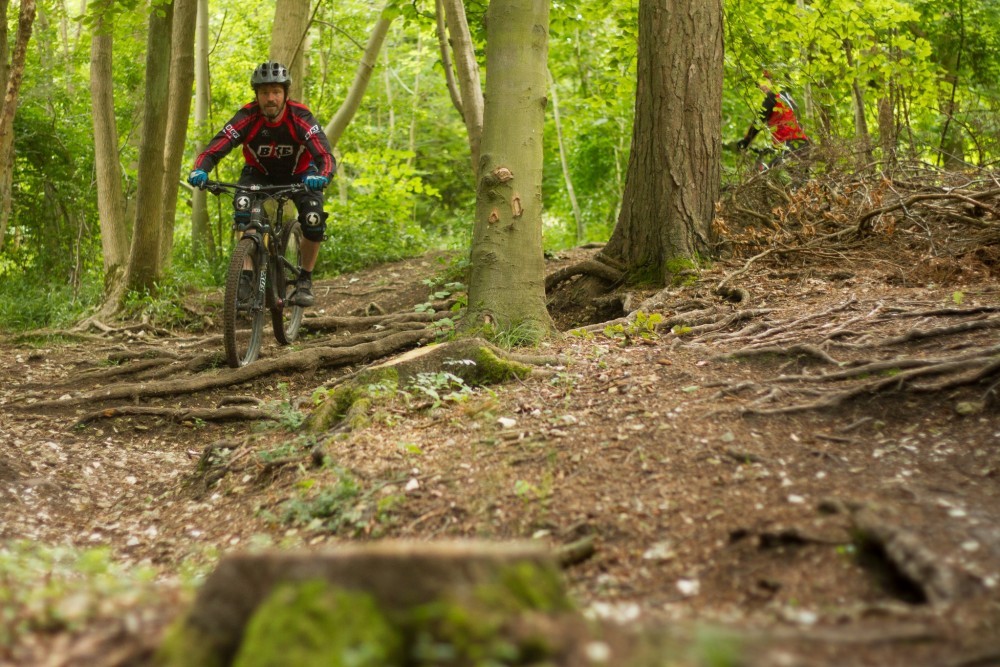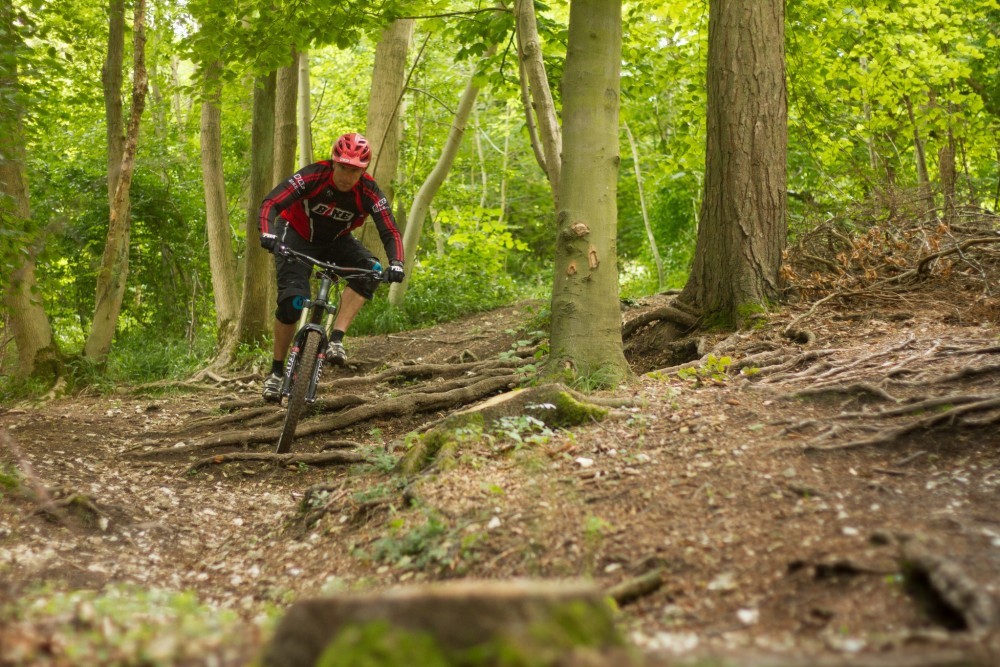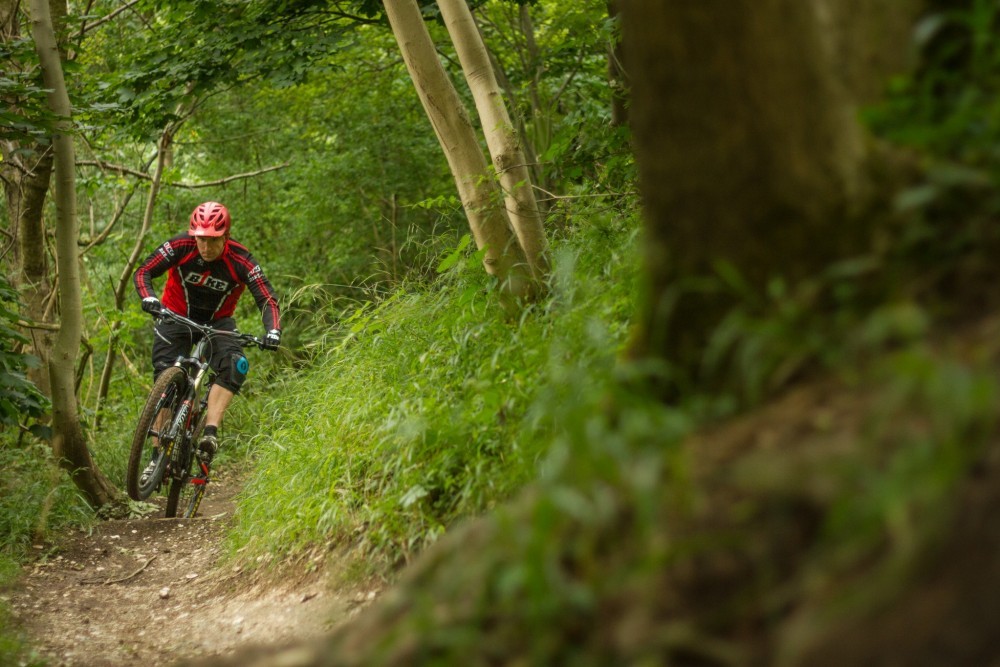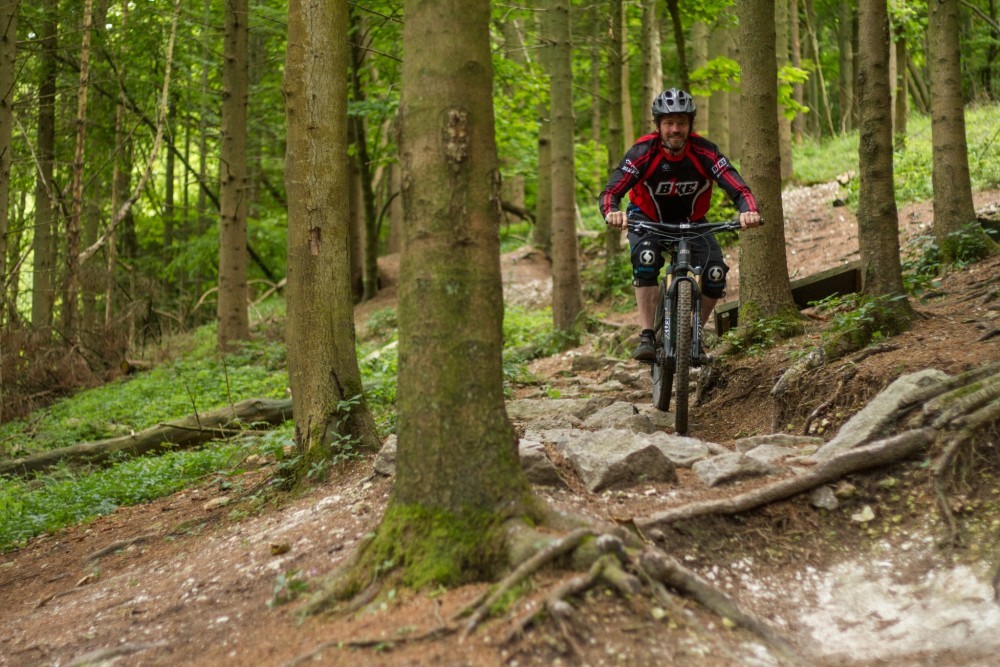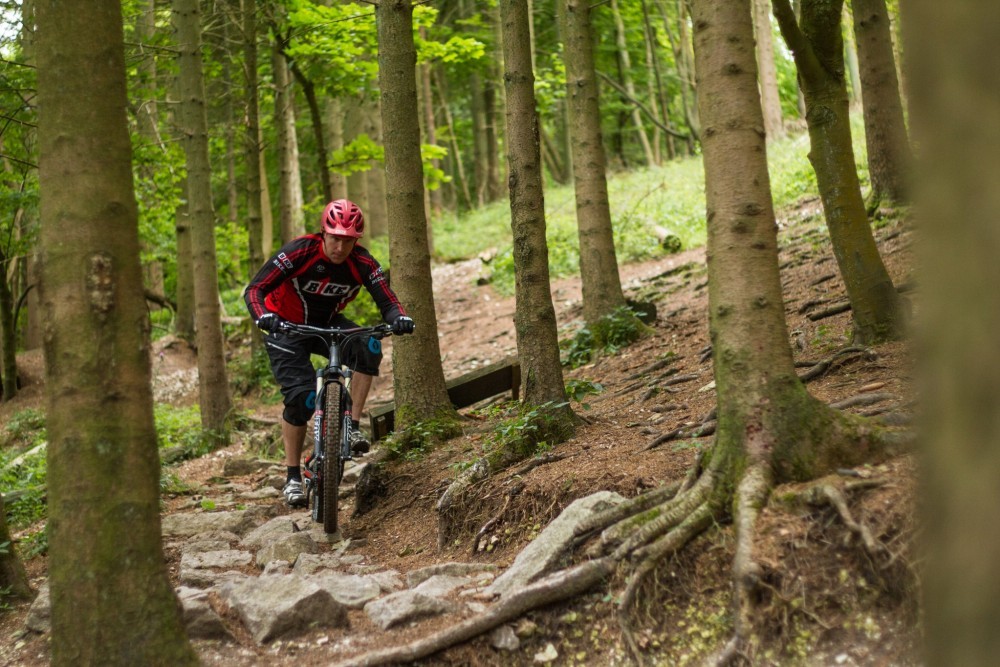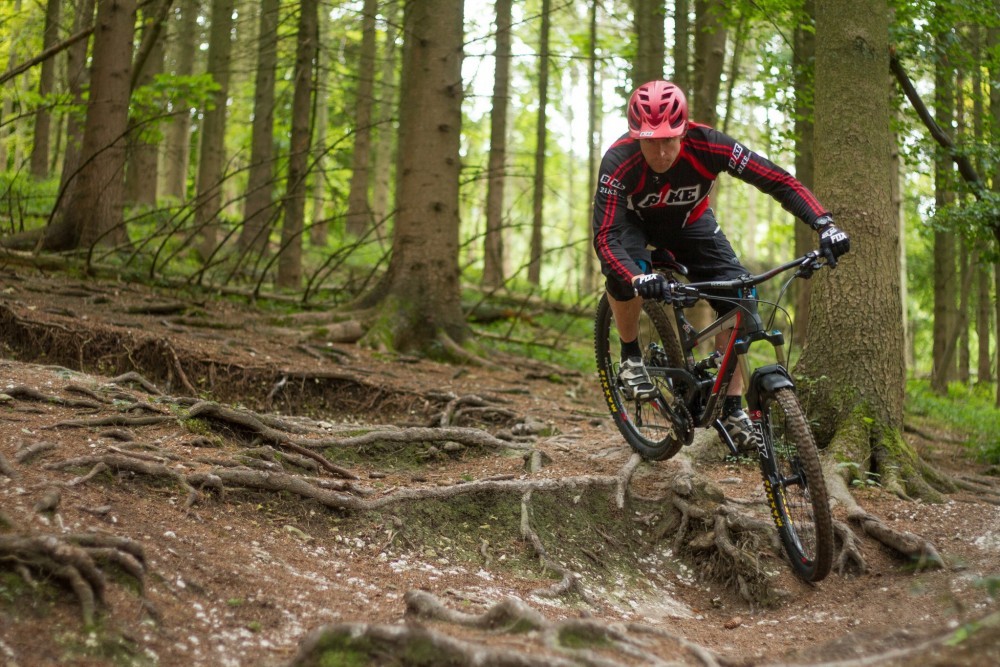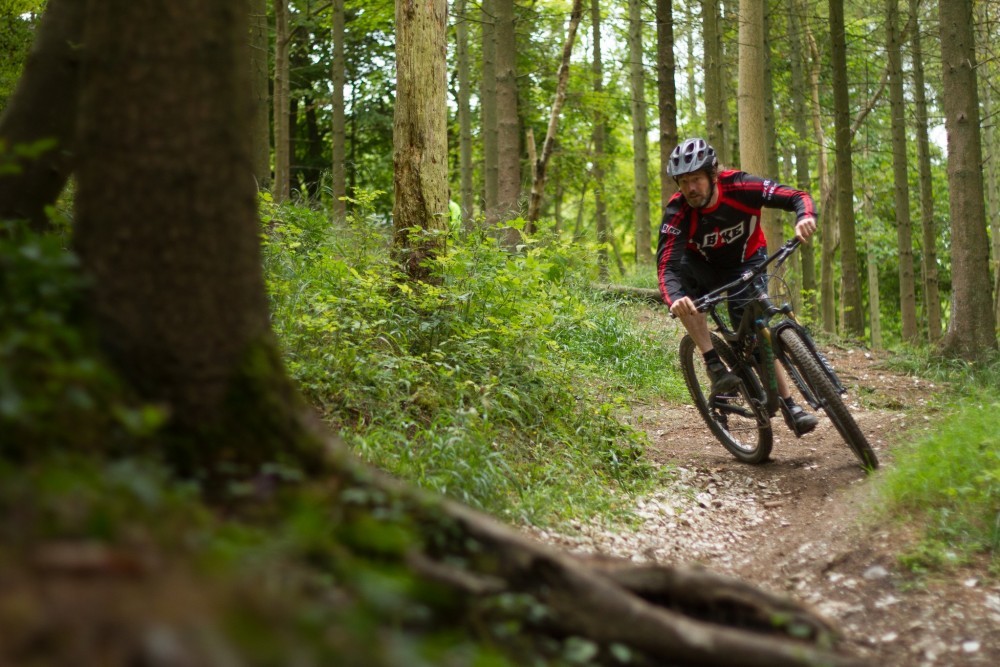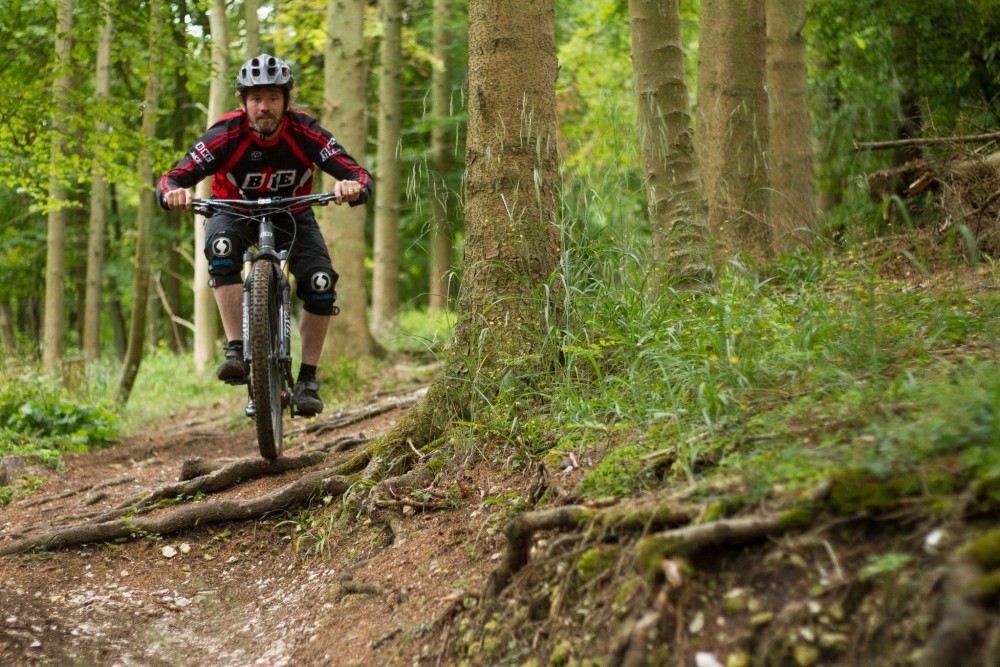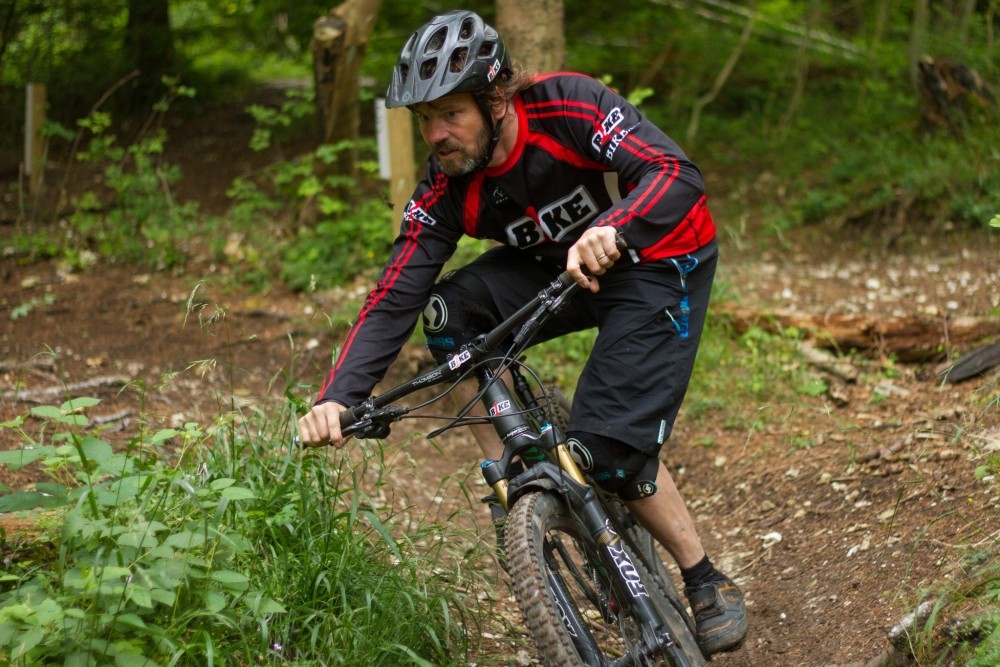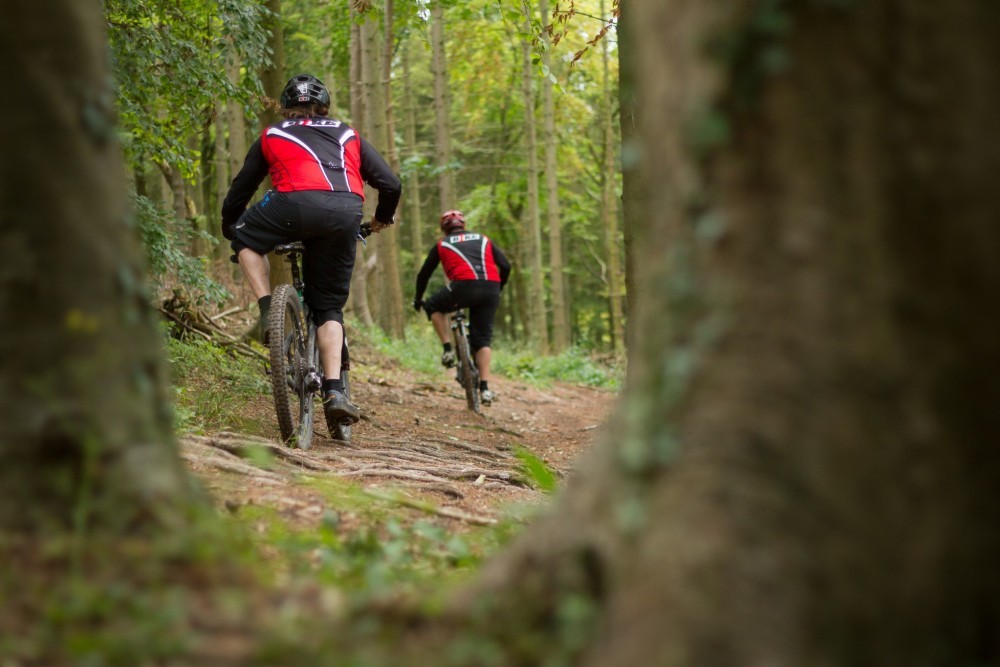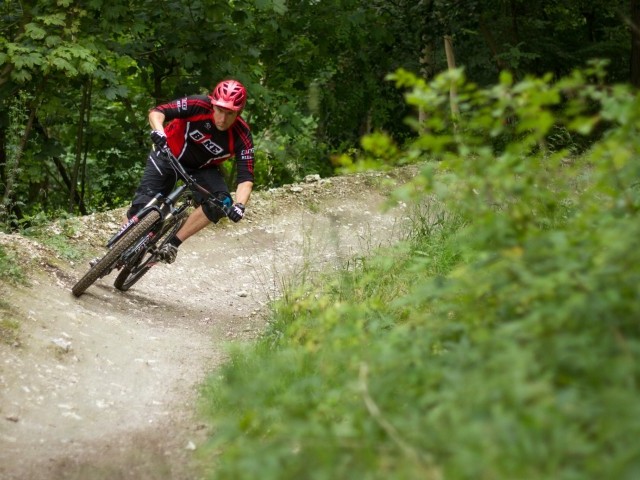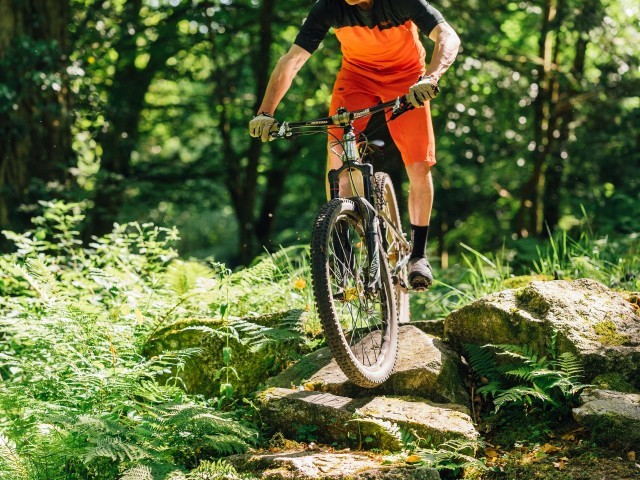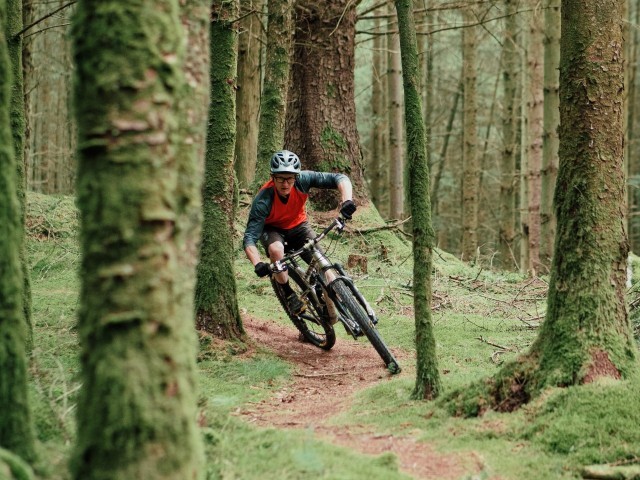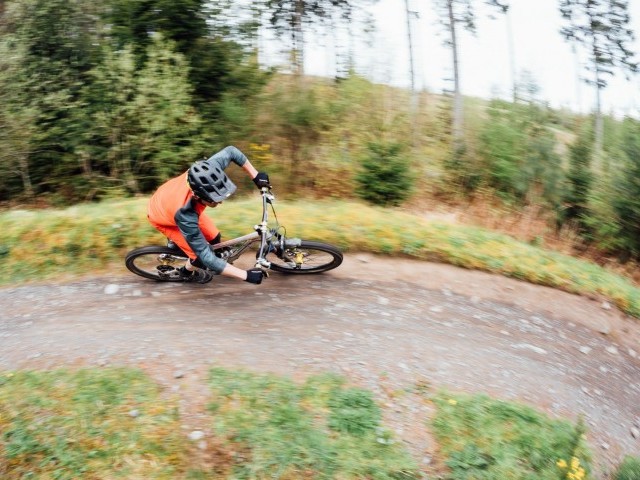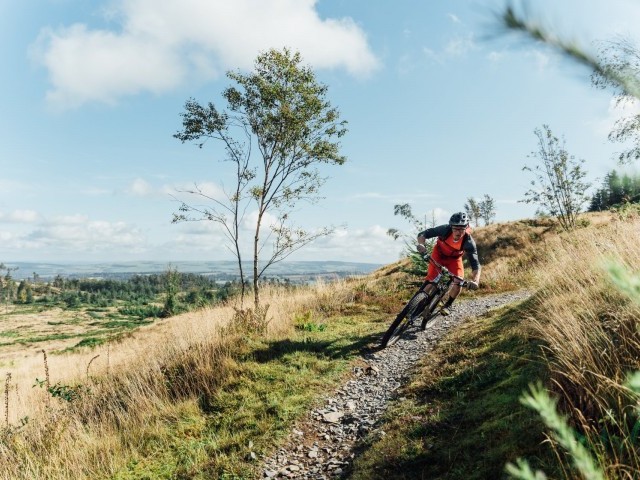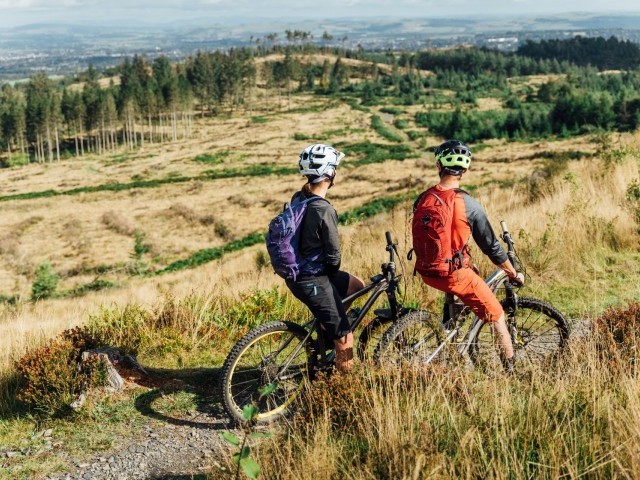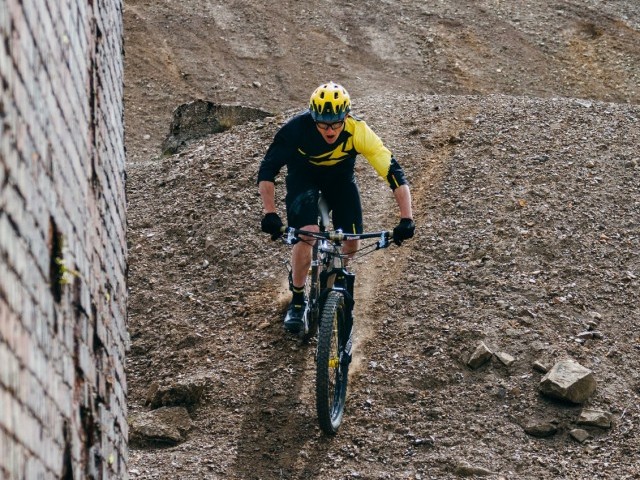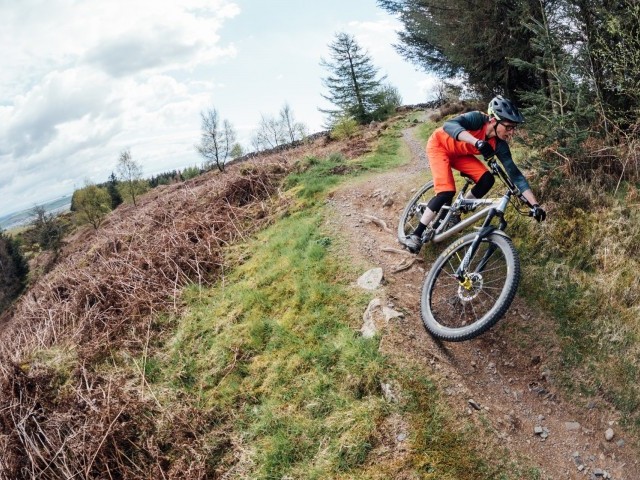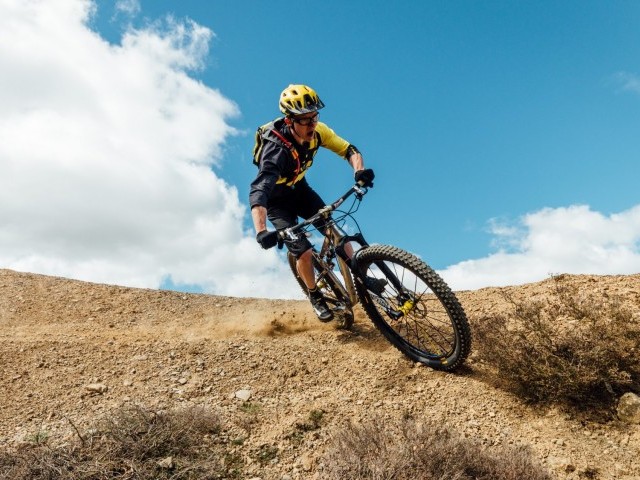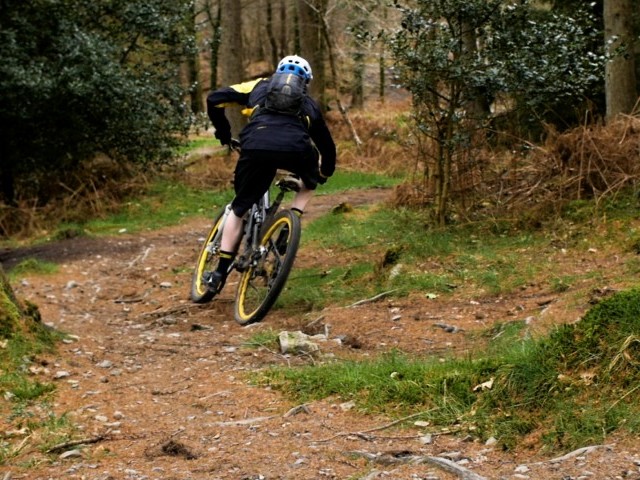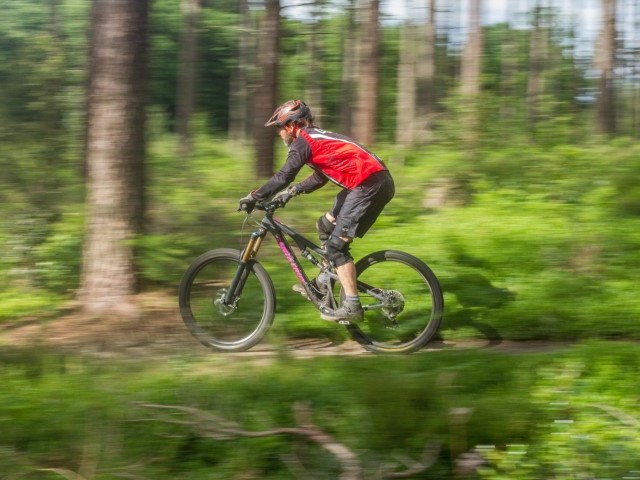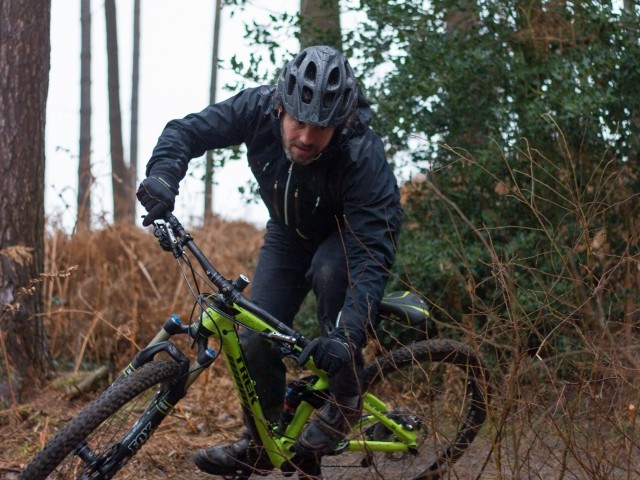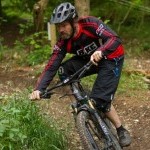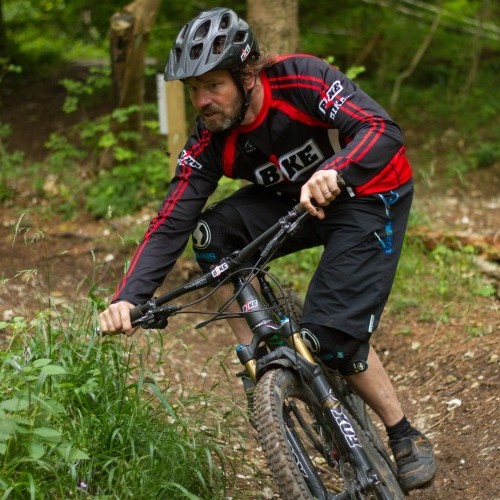
Control Freaks
Technique / Psychological
Introduction
If you are a regular reader of IMB then its pretty safe to assume that you love to ride. Through this love of mountain biking you will, no doubt, have experienced some thrills and spills, faced and overcome challenges, visited stunning locations and met some great people. It is the rich variety of experience that helps keep our love of two wheels strong and fuels our desire to get out and ride.
Rarely are two rides the same and even if you are riding a regular loop the experience from one day to the next can be very different. There are many days when we seem to just be riding on a cloud, flowing down the trail without a care in the world unable to put a pedal wrong. Our confidence seems to be unbreakable and we are fully committed to the sections we are riding. On the flip side, other days can see our confidence and ability to cope just desert us. This in itself might be part of what draws us back time and time again to the trails in search of that perfect hit of trail mastery we know is within. Even if this type of variety is the spice of riding, learning to regain control and reduce the frequency of rides that feel like a physical and emotional rollercoaster (with more troughs than peaks), is a skill well worth developing.
On some days riding the most technical terrain seems a breeze - we don't even notice the technicality as we achieve a Zen like flow, yet on other days we struggle with trails that offer little in the way of physical resistance and by all accounts we should be able to master with ease.
While riding technical terrain with ease will boost confidence and leave us feeling unstoppable, on other rides that same section can become confidence shattering.
For sure, the trail conditions may change making the same trail take on a far different character and that will play a part in how we ride it. We can't choose the weather conditions or control the climate that may change the technicality of a given trail, but we can do more to ensure that when the going gets tough we continue to be able to apply the skills that we know we have developed.
It is unlikely that our physical skill set has somehow left us since the last ride, but sometimes something stands in the way of locating the skills we once applied unconsciously and with aplomb.
If your skills themselves have not evaporated and left you, what then is stopping us tapping into them?
Both the answer to that question, and the solution to that problem, lie within.
We have looked generally at how important a rider's mindset is in their ability to fully apply their physical skills, and also we have identified the four C's; Commitment, Concentration, Confidence and Control.
It is the final of these four elements that (although linked to the others) is perhaps the key to riding at our best and unlocking our potential. In terms of control we are talking not of physical control, but of the all important element of emotional control. That said, losing control of your emotions will, to one degree or another, affect your physical control of the bike too.
This issue we will look at why it can pendulum so rapidly, what triggers these seemingly seismic shifts, how the loss of emotional control physically manifests itself, and of course how to regain and keep the control that allows us to perform to our potential.
To understand how to stay in control, we first need to understand why we lose control. Happiness, sadness, fear, in fact all of the emotions can really effect our riding, some in more positive ways than other of course. What is important is recognising why we move from riding fine through one section to struggling on the next or having good days and bad.
This is where the key driver when it comes to control is critical. It’s is designed as an emotional circuit breaker to stop us from doing something that might lead to us getting hurt or to protect us from an event that we have no control over that might hurt us. More commonly known as the ‘fight’ and ‘flight’ response, this instinctive drive when left unchecked can have a huge effect on our riding.
Understanding what triggers this response and then training and conditioning your reaction to it can have a huge positive effect on your riding. We’ve often talked about the performance cues that litter the trail. These are: Visual - the things you see. Input - the things you feel, and Waiting - the things you think about or ‘wait’ for. With mountain biking being such a sensory sport there are literally thousands of pieces of information coming into the brain through the body all the time we are riding. Understanding how to filter these pieces of information and react accordingly is the key.
During our development as a rider we’ve learned to interpret the information coming through the trail, the bike and our bodies to the brain. We’ve each refined this process to ensure that we can deal with information. Some of us can deal with more than others or have spent more time on the bike to learn how to deal with this increased level of information. For others they’ve learnt to deal with a certain level of information and haven’t had to deal with more. It’s this capacity that we are looking to increase. In fact, we don’t actually need to increase it, what we need to do is to focus on interpreting the information in a better way. Improving the quality of the information, the way we interpret and react to it, focussing on what’s important.
Focussing on the right information, and ignoring the wrong information. Sounds complicated, but the good news is that it’s actually pretty straight forward and the benefits of improving our focus, commitment and intention when riding are tenfold.
Unfortunately, when we lose emotional control and flight or fight responses are triggered, we lose the ability in part or fully to apply our learned responses to particular situations. Once the control 'trip switch' within is blown, flight mode or fight mode is launched and it becomes very difficult to correctly respond to inputs from the trail and your bike. Although designed to protect or defend you, flight and fight responses override your previously acquired bike skills and while you remain in this state you can't access them fully. The level of threat you feel, and how far you stray from emotional control towards either flight or fight, will have an increasing impact on your ability to apply what you have previously learned is the right thing to do.
Flight & Fight Responses
Consider 'emotional control' as a spectrum. Control in the middle, and Flight and Fight the opposite ends. Although flight and fight are very different approaches to a threat they share a good deal of common ground when they manifest themselves physically in a rider. Once emotional control is lost, flicking between the two is perfectly possible.
For example, you might stand shaking at the lip of a drop before, in a flash, changing heart and dropping in with a blood-curdling warrior like scream. Neither the flight nor fight responses are anywhere near control, but jumping from one approach to the other sometimes happens in an instant - the change of heart rarely has its roots in reason.
There are some tangible benefits to a rider in harnessing some of the earlier and lower levels of the bodies reaction to a heightened emotional state, but by the time you get anywhere close to a state of flight or fight any positives will be outweighed by your mental capacity being too overloaded to access your learned skill set.
As a rider you've got issues as soon as you leave control.
What then are the most common manifestations of the flight and fight responses?
Breathing - both states will affect the way you breath. In turn, the way you breath affects the way you feel. In his book The Mindful Athlete, George Mumford talks about Sympathetic & ParaSympathetic Breathing. Sympathetic is fast and shallow speeding things up. ParaSympathetic is slow & deep slowing things down. Think of breathing in terms of the 'air in' or 'air out' and there being the calm centre between depending on what you are doing. Awareness of breath (AOB) enables you to focus on that centre and the calm and control that you can find there. Either holding your breath or nervously hyperventilating leave little 'calm time' and either will make you feel more rushed and panicked. Of course, we are not looking to go into some yogic trance-like state, but be aware of how you are breathing and use breath control to your advantage rather than it being to your detriment. Finding the calm will allow you to regain control. Think more clearly about the good and not the bad and think through what you should be doing rather than what you fear might happen.
Tightening up - tensing up your core muscles, gripping on tight might be a primeval responsible to threat in preparing to take or dole out impact, but in this state you are less sensitive to the trail below you and unlikely to deal with the energy coming into the bike in the right way. You might be strong but you are not subtle or reactive. You are looking to create a state of equilibrium matching energy in to energy out. Earlier we touched upon the need to filter information - putting up a brick wall might stop the wrong information coming in or going out but it will also stop the right information reaching us. The more you fight the bike, strangle the bars, grit your teeth and hold on, the less well you can deal with the energy coming in. Rather than deal with it you begin to get more and more thrown about by it. No matter how strong you are you will eventually be overcome. Focussing your energy and power in the right way will have a far more positive impact and put you on the upward spiral that we all love to travel on. Good energy management is key but relies on creating a balance, an equilibrium. It is about a bit of give and take, pushing not being pushed, but also not steamrolling on, tensed up ready to take a big hit...which will never be far way.
Giving up - just as some riders might go into hyperaggressive wrecking ball mode of 'make or break', where they block out the fear by shutting down and diving on in, there are times riders simply wilt in the face of the challenge. We want to relax and feel what is going on not get rag-dolled all the while looking for the best place to crash. Although 'manning up' has its downfalls, simply giving up is worse still. You might want to come to a halt, but do it in the realms of control. Don't just freeze and do nothing other than lock the anchors, shut your eyes and hope.
Dropping your head - symptomatic of either flight or fight, dropping your head and exposing the hardest part of the body either as a means of protection or aggression is not good. It will add to the desire to hold your breath and restrict massively your field of vision. Looking down, as we know, affects your sense of time perception. The nearer you look the more you have to decipher in less time, the closer you get to the target you’re fixating on, the worse it gets and the more you might drop your head. Before you know it you are on that downward spiral again. The solution, of course, and the trick to getting back on the upward curve is simple. Lift your head, look through not to, and buy yourself some thinking time. Find the calm and regain the control.
If not dealt with, any or all of these physical manifestations will contribute to a downward spiral - the more you succumb to them the more impact they have.
By identifying what is triggering your flight and fight responses you can train yourself to overcome them. Programming your brain in how to deal with the threats is made easy, by seeing them as performance cues. Visual threats - look through, inputs - pump through, and for those you anticipate or are waiting for - think through.
If you do find yourself looking down into a transition or section the sooner you look up and through, the less your ‘dwell time’ and the less from control you will stray.
Common to both flight and fight are 'freeze'. In the flight mode you are frozen by your fear and engaged in a never-ending process of worrying about what to do, rather than actually doing anything. In fight mode you make a decision to do something, but that decision is centred around protecting yourself while you do it. Either way your are not particularly proactive and your reactions are less likely to be those that have been developed with bike riding in mind and more rooted in self preservation and protection.
If you can regain control emotionally by managing the performance cues, in whatever form they present themselves, you will be able to think about what you can do to positively affect your situation. While engaged in flight and fight modes you are more likely to focus on the threat than the solution. 'Failure fixation' is a slippery and reliably predictable slope. Look for the solution, think about the skills you can employ rather than worrying about those that you don't have to hand.
We have all joked about a riders' (possibly our own) need to 'man up' and get on with it. A&E departments have records that show a direct correlation between the number that 'man up' and the number that become 'man down'.
Many of us have felt the desire to curl up in the hope that it will all be over. I’ve not yet seen anyone successfully wish themselves out of trouble, but the wish for it all to be over is often granted...if not delicately delivered or consequence free.
There is a third way that is far more reliable in terms of dealing with flight and fight triggers. There is no need to 'man up', no benefit or reward in curling up, so take a more reasoned approach to your riding, find the calm, regain the control - 'wise up'.
Don't confuse staying in control with not stretching yourself, there is always one occasion when we have to do something for the first time and that is when we need to be most committed. Commit to the section and your skill set. Think though the section, look for colour matches to terrain and situations already ridden and tamed. There may well be nerves, but don't let them become your focus, work on finding your calm with regards to breathing and apply what you know. Recognise and overcome performance cues and leave your MTFU spray at home. Above all, relish the challenge, strive for the optimum over the maximum and enjoy the ride!
This technique article was in Issue 37 of IMB.
Related
By Richard Kelly
Richard Kelly has been riding bikes since forever, and teaching people to become better mountain bikers for over a decade. He’s always out in the Surrey Hills training riders, building trails and riding for himself whenever he gets the chance. His unique perspective on mountain bike technique has earned him fans the world over, with some speculating he is actually Jamiroquai or perhaps Jack Sparrow…







